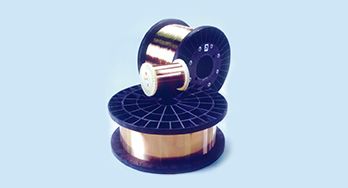Without a doubt, there are many advantages found when using tinned copper as opposed to bare copper. The more time someone takes learning about what tinned copper is, the more they will realize that it is a valuable material.

Tin is electroplated onto copper to create tinned copper. The base alloy is coated with tin to enhance the properties of the alloy. Copper, on its own, has many beneficial characteristics that make it such a sought-after material. Unfortunately, like with all materials, copper does have some shortcomings. To make up for this, tin is plated onto copper. This is also called tinning, and it is done for several reasons. It strengthens the natural properties of copper, which makes the metal better equipped to resist high temperatures, wet environments, and humidity. It is very common to find tinned copper being used in marine environments.
You have options for base and plating materials, which at times makes choosing very staggering. Choosing the right materials does more than optimizes performance; it also increases project longevity.
Consider using tinned copper as an effective way to prevent copper conductors from oxidation and tarnishing. When copper oxidizes, it turns green. Oxidation is a chemical reaction that takes place on a metal surface when oxygen is present in the air, which causes the metal to oxidize or corrode.
A 12-gauge tin-coated copper wire is known to last up to 10xs longer than a similar bare copper wire. Tin can resist corrosion, which means the plating protects the copper underneath.
Plated Wire
For more information on plated wire or straight and cut wire, you should not hesitate to give our team a call.
Related Reading:

 Technical Data
Technical Data


